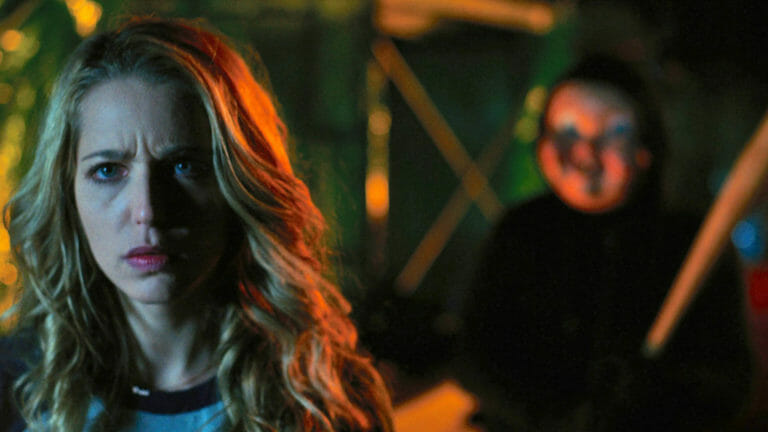By Staff · October 16, 2017

This weekend marked a significant surprise at the box office with the Blumhouse/Universal co-production Happy Death Day earning $26.5 million dollars. This puts it ahead of the Alcon Entertainment/Warner Bros mammoth-budget sequel, Blade Runner 2049, which earned just $15.1 million dollar on its second weekend, further eroding the would-be blockbuster’s chances of breaking even on its budget – rumored to be over $150 million dollars.
The problem here would seem to be one of marketing – in spite of studio efforts to transform the Blade Runner brand from art-house cult classic to mainstream tent-pole, the sequel, which stars Ryan Gosling and Harrison Ford, appears to be appealing primarily to one quadrant: adult males. In other words, it’s unlikely that the film’s marketing strategy, which kept the film’s plot mostly under wraps, provoked significant interest in any quadrant outside the film’s limited built-in audience.
 That’s not to say the Denis Villeneuve-directed sequel has been poorly received. Far from it in fact, with stellar critical reviews and high audience ratings including an A- Cinemascore, and a 78% from PostTrak. Still, while the brand’s prestige may grant the film a box-office boost come awards-season, Blade Runner 2049 remains unlikely to clear $100 million at the domestic box office. Given its budget, this prospect represents a significant hurdle for the film’s financiers, with Alcon, Sony, and Warner Bros. all looking to foreign markets to pick up the slack.
That’s not to say the Denis Villeneuve-directed sequel has been poorly received. Far from it in fact, with stellar critical reviews and high audience ratings including an A- Cinemascore, and a 78% from PostTrak. Still, while the brand’s prestige may grant the film a box-office boost come awards-season, Blade Runner 2049 remains unlikely to clear $100 million at the domestic box office. Given its budget, this prospect represents a significant hurdle for the film’s financiers, with Alcon, Sony, and Warner Bros. all looking to foreign markets to pick up the slack.
On the other hand, Happy Death Day marks a continued streak for Blumhouse, which has seen similar success this year with low-budget original horror films like Split and Get Out. While word of mouth is not quite as positive as those two films, the horror/comedy has shown a broader appeal across quadrants – and in particular with females below the age of 25.
The film’s success owes much to its marketing, as well as Blumhouse’s keen understanding of its target audience. For example, the film’s trailer played with the horror mega-hit IT for six weeks prior to its release. It showcased fun, old-fashioned scares over atmosphere and art-house flair – not unlike the film audiences were there to see.
Online, the film’s trailer has been viewed over 157 million times, with advertisements also appearing in front of Taylor Swift’s Look What You Made Me Do video. The cast and crew also participated in the opening of Universal Studios Halloween Horror Nights, which featured a set-piece maze from the film, while TV spots aired in front of genre appropriate fare such as Supernatural, American Horror Story, and Fear the Walking Dead.
The lesson? Despite its status as one of the best pictures of the year, Blade Runner 2049’s marketing strategy represents a failure to communicate with audiences outside of the film’s pre-installed base. Combine this with a staggering budget, a long running time, and an R-rating, and Blade Runner 2049 will be lucky to break even when all is said and done.
Meanwhile, Blumhouse has proven its marketing prowess once again with Happy Death Day. Like Get Out and Split (both of which used their horror genre-trappings to package some seriously sophisticated storytelling), it’s a film that understands both what it is, and, more importantly, the demands of its audience. Likewise, for screenwriters, the success of Blumhouse’s 2017 sleight further proves the box-office power of horror cinema – even at a low budget. And with resources like ScreenCraft’s Horror Screenplay Contest, and The Blood List, it’s never been easier to get your latest horror masterpiece into the right hands.
For the latest from The Script Lab, check us out on Twitter, Facebook, and Instagram.